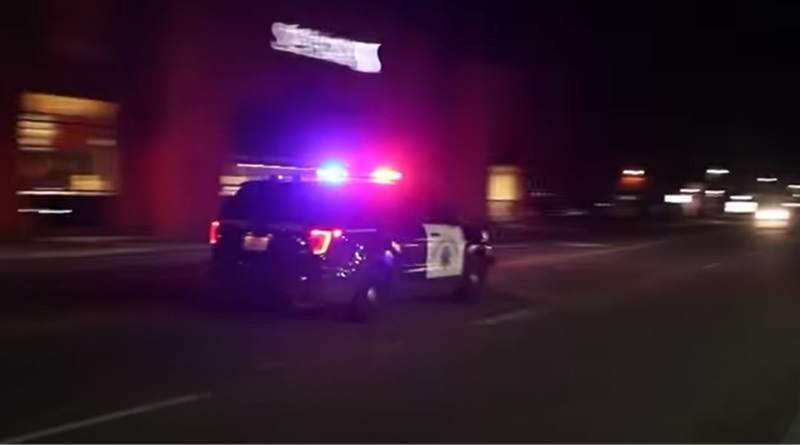
Not gonna lie, running lights and siren is still a thrill. These days for me it’s only when I am doing a ride with an agency for research, but the red, white, and blue swirling lights and the pulse of the siren makes my brain generate adrenaline and I’m ready for action.
Emergency vehicle warning systems have improved over the years. Technology, experience, research, and lawsuits have influenced the change. A balance of adequately warning the public without disorienting drivers and officers alike may still be elusive.
According to manufacturers’ accounts of lights and siren history, horse-drawn fire wagons led the way in making a racket to clear traffic. The fabled Dalmatian canines, with their strikingly loud bark, would run ahead of the fire carriage while the fireman on the wagon would ring a bell to clear the way.
Vintage television and movies show the red spotlight, the revolving bubble-gum light mounted like a pimple on the roof of a patrol car, and the Adam-12 style dual red lights fashioned from old taillights. Sirens were once air-operated permutations of musical instruments developed in the late 1700s. Since compressed air was necessary to operate the noisy contraption, for a short time whistles were attached to exhaust pipes but were deemed to be too shrill and annoying.
It wasn’t until the 1960s that electronic sirens came into use, replacing mechanical sirens. They were smaller and louder with a variety of sound options. Some jurisdictions used different tones and patterns for fire equipment, police vehicles, and ambulances so that motorists and pedestrians could tell what type of vehicle was headed their way. Some still say they can tell the difference between first responder vehicles by the tone of the siren, but limiting sounds to one type of service is no longer practiced.
Siren sounds are often changed by responders as they enter an intersection for a higher level of alert. Many cities have traffic lights engineered to favor responders at intersections with a green light. The traditional sound is the wail, the British sound is the hi-lo, and the other woo-woo is the yelp. Low-frequency tones, called the howler, have been successful in attracting attention not by their volume but by actually projecting waves that can be felt by motorists. Fire and EMS vehicles are often equipped with an air horn that sounds like a freight train. That sound is hard to miss but has the risk of startling motorists.
The federal government stepped in to establish minimum standards for emergency lighting under the auspices of several different agencies, adding to state laws that regulate both the designation of what an emergency vehicle is and the motorists’ responsibility to yield to them. The colors of lights are thought to have been designated as red and blue to be visible to even the color blind. Some states limit what type of vehicles can display which color, but most lighting systems integrate a variety of colors including yellow, green, and white. A green as the primary stationary light has been designated for the command center for easy recognition in a major event.
With the limited visibility of front-facing lights, the light bar configuration became popular in the 1970s. Ally spotlights on the sides obscured the vision of drivers approaching a police vehicle perpendicularly, leading to side crashes even with emergency equipment running. The visibility of emergency lighting from the side resulted in one popular V-shaped design and the eventual addition of side lighting on most police cars in recent years. The profession has also learned that when the trunk lid is up, the roof lights are obscured, so lights are now typically attached to the interior of trunk lids or SUV tailgates.
The brightness of warning lights increases visibility but can be distracting and disorienting to motorists. Police officers operating outside their squad cars at car stops and crash scenes are often blinded themselves or invisible to motorists behind a curtain of light. Impaired drivers are particularly dangerous as they tend to be attracted to the light rather than exercising care to go around. Dozens of officers are killed or injured annually from being struck on roadsides.
Technological advances include LED lighting, which is brighter with reduced draw on car battery life. Strobe lights are still popular with their pulsing visibility. Low-profile lighting for mounting in the cars’ interior has improved in visibility since the days of Kojak’s famous teardrop light. The variety of patterns, colors, and locations in modern emergency vehicles is designed to make motorists take notice and give old retired cops a reflexive adrenaline rush.
Make a difference. Support the NPA.